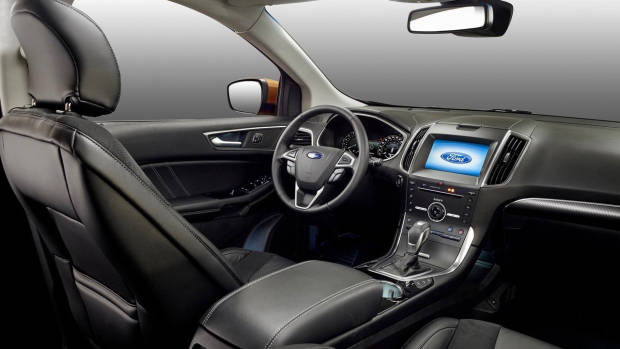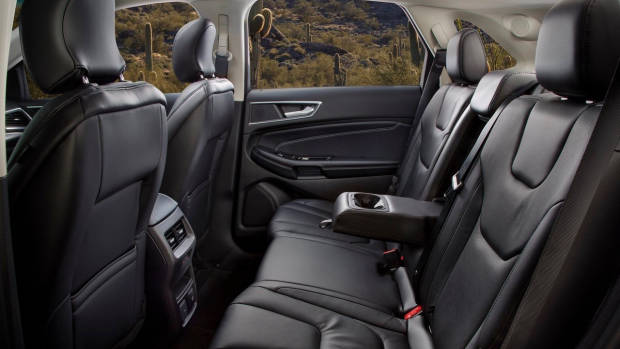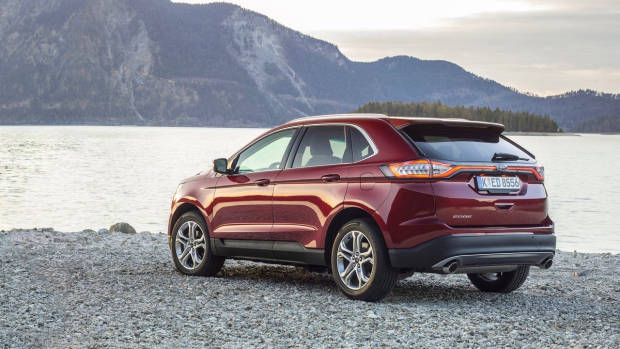-
Car Reviews
- All reviews
- Midsize SUVs
- Small cars
- Utes
- Small SUVs
- Large SUVs
- Large cars
- Sports SUVs
- Sports cars
- Vans
Latest reviews
- Car News
-
Car Comparisons
Latest comparisons
- Chasing Deals
The long-awaited replacement for the Ford Territory will be named Endura when it goes on sale in Australia towards the end of 2018. Called Edge overseas, Ford Australia has been forced to name the car Endura because of a trademark on the name from Toyota Australia, which has used the Edge name on special editions in the past.
The Endura will be a five-seat SUV imported from Canada, where it has been sold since 2007. Unlike the Territory, the Endura will feature only diesel power, with no petrol powerplants available in Australia, and will only feature five seats. The Endura will slot in Ford’s lineup above the smaller EcoSport and Escape Ford SUVs, whilst sitting below the larger Everest.

“The Endura reflects the dynamic motoring landscape in Australia, where buyers are now looking for more specific features and attributes in their SUVs as opposed to a one-size-fits-all solution,” said Ford Australia President and CEO, Graeme Whickman.
“The appetite for SUVs in this country is impressive, so we’re excited to bring a premium new offering from our global portfolio to local audiences.

Ford claims that the Endura name was chosen because of its resemblance to the word endurance, whilst also following the brand’s E SUV naming policy. Endura as a name supposedly represents “strength, durability, reliability and sportiness, which are key attributes of this all-new vehicle.” Ford also claims that market research conducted resulted in ‘Endura’ resonating most, relative to the features and capability of the vehicle, as well as being “unique and contemporary.”
Overseas, the Edge is available with a variety of engines and specifications. North American markets receive only petrol-powered powerplants ranging from a 183kW 2.0-litre turbo petrol to a 210kW 3.5-litre V6 and a 235kW 2.7-litre twin-turbo V6. European markets only receive diesel-powered Edges, with a 130kW/400Nm and bi-turbo 160kW/450Nm 2.0-litre units available. The higher-powered diesel’s six-speed dual clutch automatic transmission choice makes it the default choice for Australian consumption – the low-power unit is manual-only and unlikely to be sold here. Ford Europe claims a combined fuel consumption rating of just 5.8L/100km for the bi-turbo diesel, with CO2 emissions listed as 149g/km.

Available equipment on European market Edges (and therefore more likely to trickle down to Australian models) includes heated and ventilated front seats, adaptive LED headlights with LED tailights, a panoramic glass sunroof, a range of different interior colours, Nappa leather, up to 20-inch alloy wheels and a range of active safety equipment such as autonomous emergency braking with pedestrian detection, radar cruise control, blind-spot monitoring with rear traffic alert, lane keep assist and departure warning, traffic sign recognition and automatic high beam headlights.
Dimensionally, the Edge sits at 4,808mm long, 2,184mm wide, 1,692mm high – making it 300mm longer than a Mazda CX-5 and 100mm longer and 200mm wider than a seven-seat Skoda Kodiaq, yet it only features five seats. Ford lists bootspace as 602-litres with the seats up, and 1,847-litres with the rear seats folded – 152-litres less than the smaller Skoda.

The Endura will land in Australia as a mid-life facelifted version of the Edge, and will continue a busy product year for Ford. The slow-selling EcoSport is about to receive the heavy facelift, whilst both the Escape and Everest medium and large SUVs will also receive updates as well throughout the year. Elsewhere in the Ford range, the Mustang facelift will launch in the first half of 2018, with the new Ranger and Focus, and possibly the new Fiesta ST, possibly waiting in the wings.

Stay tuned to Chasing Cars for news and reviews regarding the Ford range in Australia.
Latest news
About Chasing cars
Chasing Cars reviews are 100% independent.
Because we are powered by Budget Direct Insurance, we don’t receive advertising or sales revenue from car manufacturers.
We’re truly independent – giving you Australia’s best car reviews.